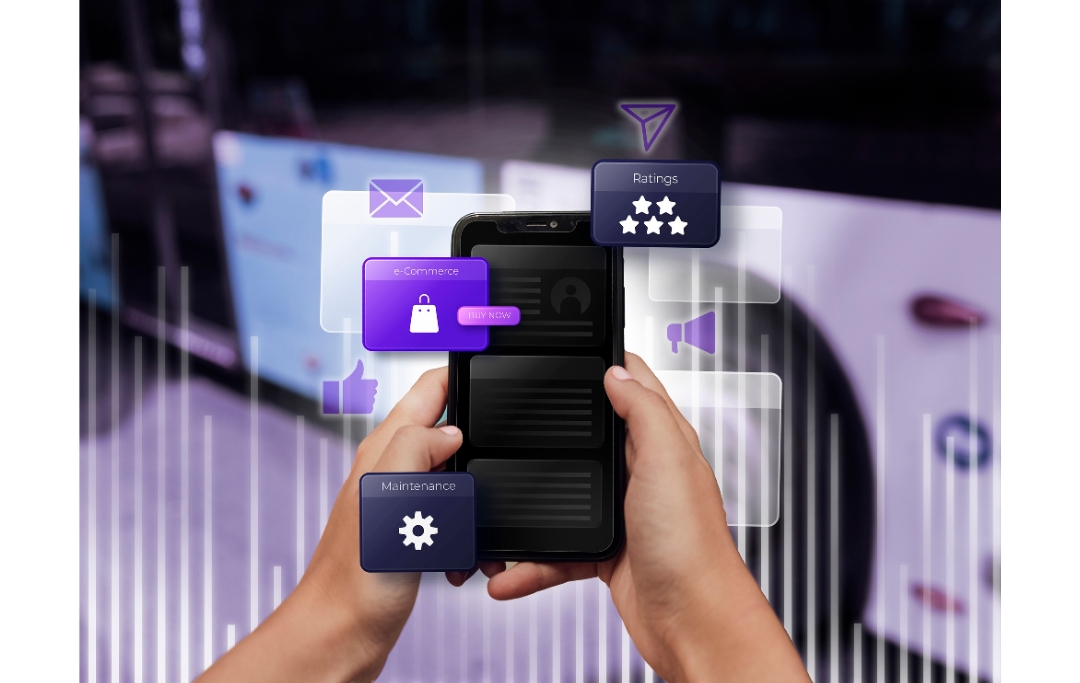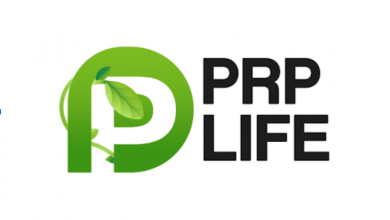The Backbone of Trust: How an SMS Services Provider Secures Critical Communications

Modern businesses rely on instant communication to maintain customer relationships and operational efficiency. Critical messages like authentication codes, transaction alerts, and emergency notifications demand absolute reliability and security. When these essential communications fail or arrive late, the consequences ripple through customer trust and business operations. The stakes become even higher when sensitive financial or personal data travels through these channels.
Choosing the right SMS services provider becomes a strategic decision that impacts every aspect of customer interaction. These specialized platforms handle billions of messages daily, ensuring that time-sensitive communications reach their intended recipients within seconds. The technology behind reliable SMS delivery involves complex routing algorithms, redundant infrastructure, and advanced security protocols. Perhaps most importantly, these providers understand that each message carries the weight of customer trust and business reputation.
The Critical Role of SMS in Modern Business Operations
Time-Sensitive Communications Drive Business Success: Banking institutions, e-commerce platforms, and healthcare systems depend on instant message delivery for critical operations. One-time passwords expire within minutes, making delivery speed a non-negotiable requirement. Transaction confirmations must arrive immediately to prevent customer anxiety and reduce support tickets. Emergency alerts in healthcare or security systems can literally save lives when delivered without delay.
Authentication Security Depends on Message Integrity: Two-factor authentication has become the gold standard for digital security across industries. These authentication messages contain sensitive codes that must remain encrypted during transmission and delivery. Any breach or interception of these messages compromises entire security systems. The reliability of SMS-based authentication directly correlates with user confidence in digital platforms and services.
Customer Experience Hinges on Communication Reliability: Modern consumers expect instant confirmation of their transactions, appointments, and account activities. Delayed or failed message delivery creates confusion, frustration, and doubt about service quality. Studies show that customers who receive timely SMS confirmations demonstrate higher satisfaction rates and increased platform usage. The absence of expected messages often triggers customer service calls, increasing operational costs significantly.

Advanced Technology Infrastructure for Message Delivery
Global Network Architecture and Redundancy: Enterprise-grade SMS platforms maintain connections with hundreds of telecom operators across multiple continents. This extensive network ensures that messages can route through alternative pathways when primary routes experience congestion or failures. Load balancing technology distributes message volume across multiple servers and geographic locations. Redundant data centers provide backup capabilities that activate automatically during system maintenance or unexpected outages.
Intelligent Routing Algorithms Optimize Delivery: Advanced SMS platforms employ machine learning algorithms that analyze historical delivery data to predict optimal routing paths. These systems consider factors like carrier reliability, delivery speed, and cost effectiveness for each destination. Real-time monitoring identifies route performance issues and automatically switches to backup carriers within milliseconds. The technology continuously learns from delivery outcomes, improving routing decisions with each message sent.
Quality of Service Monitoring and Performance Optimization: Comprehensive monitoring systems track delivery rates, latency, and error codes across all network routes and carrier connections. Performance dashboards provide real-time visibility into message status, allowing immediate identification of delivery issues. Automated alerting systems notify technical teams when delivery rates drop below predetermined thresholds. Historical performance data enables capacity planning and infrastructure optimization for peak usage periods.

Security Protocols Protecting Sensitive Information
End-to-End Encryption Standards: Message content receives military-grade encryption from the moment it enters the SMS platform until delivery to the recipient device. Advanced encryption protocols protect against interception during transmission through multiple network hops. Encryption keys rotate regularly to prevent long-term security vulnerabilities. Even internal system administrators cannot access decrypted message content without proper authorization and audit trails.
Compliance with Industry Security Standards: Leading SMS providers maintain certifications for SOC 2, ISO 27001, and other internationally recognized security frameworks. Regular third-party security audits verify compliance with financial industry standards like PCI DSS. Healthcare-focused implementations meet HIPAA requirements for protecting patient information. Government and defense applications often require additional security clearances and specialized compliance measures.
Access Control and Audit Trail Management: Multi-factor authentication protects administrative access to SMS platforms and customer accounts. Role-based permissions ensure that team members can only access features and data relevant to their responsibilities. Comprehensive audit logs track every message, configuration change, and administrative action with timestamp and user identification. These logs support forensic investigations and compliance reporting requirements.
Building Customer Trust Through Reliable Delivery
Consistent Performance Builds Brand Confidence: Customers develop trust in digital platforms when they receive expected communications consistently and promptly. This reliability becomes particularly important during high-stakes interactions like financial transactions or medical appointments. Brand reputation suffers significantly when critical messages fail to deliver during important moments. Companies that prioritize SMS reliability often see higher customer retention rates and positive word-of-mouth referrals.
Transparency in Delivery Status and Reporting: Advanced SMS platforms provide detailed delivery reports that include timestamps, carrier information, and delivery confirmation status. Real-time dashboards allow businesses to monitor campaign performance and identify potential issues before they impact customers. Failed message notifications enable immediate follow-up through alternative communication channels. This transparency helps businesses maintain customer trust even when technical issues occur.
Proactive Issue Resolution and Customer Support: Leading SMS providers offer 24/7 technical support with dedicated account managers for enterprise clients. Proactive monitoring identifies potential delivery issues before they affect customer communications. Emergency escalation procedures ensure rapid response during critical system events. Regular performance reviews help businesses optimize their messaging strategies and improve customer experience outcomes.
Emergency Communications and Critical Alert Systems
Healthcare Emergency Notifications: Hospitals and medical facilities rely on SMS platforms for patient appointment reminders, test result notifications, and emergency health alerts. These messages often involve HIPAA-protected information requiring specialized security measures and compliance protocols. Delivery failures in healthcare settings can delay critical treatments or emergency responses. Many healthcare systems maintain backup communication channels to ensure patient safety during technical outages.
Financial Transaction Alerts: Banks and financial institutions send millions of transaction notifications daily to help customers monitor account activity and detect fraud. These messages must arrive within seconds of transaction completion to provide meaningful security protection. False fraud alerts caused by delivery delays can freeze legitimate transactions and create customer service burdens. The financial industry often requires specific compliance measures and audit trails for transaction-related communications.
Public Safety and Emergency Services: Government agencies and emergency services use SMS platforms to broadcast critical public safety information during natural disasters, security threats, or public health emergencies. These high-volume emergency broadcasts require specialized infrastructure capable of handling massive message volumes simultaneously. Geographic targeting capabilities ensure that alerts reach only affected populations without causing unnecessary panic. Backup communication systems provide redundancy during infrastructure damage or network congestion.
Integration Capabilities and Developer Resources
API Documentation and Development Tools: Modern SMS platforms provide comprehensive APIs that support multiple programming languages and development frameworks. Detailed documentation includes code examples, error handling guidance, and best practice recommendations for different use cases. Software development kits (SDKs) simplify integration for popular programming languages and reduce development time significantly. Testing environments allow developers to validate integration before deploying to production systems.
Webhook Support for Real-Time Updates: Webhook functionality enables real-time delivery status updates that integrate seamlessly with existing business applications. These automated notifications eliminate the need for constant API polling and reduce system resource consumption. Custom webhook configurations allow businesses to route different message types to appropriate internal systems. Retry mechanisms ensure that webhook deliveries reach their destinations even during temporary network issues.
Scalability Planning and Load Management: Enterprise SMS platforms support sudden traffic spikes without degrading performance or delivery rates. Auto-scaling infrastructure adjusts capacity based on real-time demand patterns and historical usage data. Rate limiting capabilities protect against accidental or malicious high-volume messaging that could impact system performance. Capacity planning tools help businesses forecast messaging needs and budget for growth accordingly.
Cost Optimization and Budget Management
Transparent Pricing Models: Leading SMS providers offer clear, predictable pricing without hidden fees or surprise charges for delivery confirmations. Volume-based pricing tiers provide cost savings for businesses with high messaging volumes. Geographic pricing reflects actual carrier costs rather than arbitrary markup structures. Real-time spending dashboards help businesses monitor costs and avoid budget overruns during marketing campaigns.
Message Optimization Features: Link shortening services reduce message length and provide click tracking analytics for marketing campaigns. Template libraries help businesses create effective messages while staying within character limits and regulatory requirements. Personalization features improve customer engagement without increasing message costs significantly. A/B testing capabilities help optimize message content for better response rates and cost effectiveness.
Budget Controls and Spending Limits: Account-level spending limits prevent accidental overspending during automated marketing campaigns or system errors. Department-specific budgets allow large organizations to allocate messaging costs across different business units. Real-time alerts notify administrators when spending approaches predetermined thresholds. Detailed cost reporting provides insights for optimizing messaging strategies and reducing unnecessary expenses.
- Key Features to Evaluate: When selecting an SMS provider, consider delivery speed guarantees, global carrier coverage, security certifications, API documentation quality, customer support availability, pricing transparency, and integration capabilities with existing business systems.
Analytics and Performance Measurement
Real-Time Dashboard Analytics: Comprehensive analytics platforms provide instant visibility into message delivery rates, customer engagement metrics, and campaign performance across different message types. Heat maps show geographic delivery patterns and identify regions with potential connectivity issues. Time-based analytics reveal optimal sending windows for different customer segments and message categories. Custom reporting tools allow businesses to create tailored dashboards for different stakeholders and use cases.
Customer Engagement Tracking: Advanced platforms track customer interactions beyond basic delivery confirmation, including link clicks, response rates, and opt-out patterns. Engagement scoring helps identify the most responsive customer segments for targeted marketing campaigns. Behavioral analytics reveal customer preferences for message timing, frequency, and content types. This data supports personalization strategies that improve customer satisfaction and reduce unsubscribe rates.
ROI Calculation and Business Impact Measurement: Detailed analytics help businesses calculate return on investment for different messaging campaigns and use cases. Conversion tracking connects SMS interactions to business outcomes like sales, appointments, or customer service resolution. Cost-per-acquisition metrics help optimize marketing spend across different communication channels. Performance benchmarking compares results against industry averages and historical performance data.
Conclusion
The foundation of successful digital communication rests on choosing an SMS services provider that prioritizes security, reliability, and performance above all else. Businesses that compromise on message delivery quality risk damaging customer relationships and operational efficiency in ways that extend far beyond immediate communication failures. The technology infrastructure, security protocols, and support systems that power reliable SMS delivery represent a critical investment in customer trust and business continuity.
Your organization’s communication strategy deserves a platform that understands the weight of every message sent and the trust placed in timely delivery. Take time to evaluate potential SMS providers based on their security certifications, delivery performance guarantees, and technical support capabilities. Request detailed performance reports and security documentation before making your final decision.

Source: The Backbone of Trust: How an SMS Services Provider Secures Critical Communications




